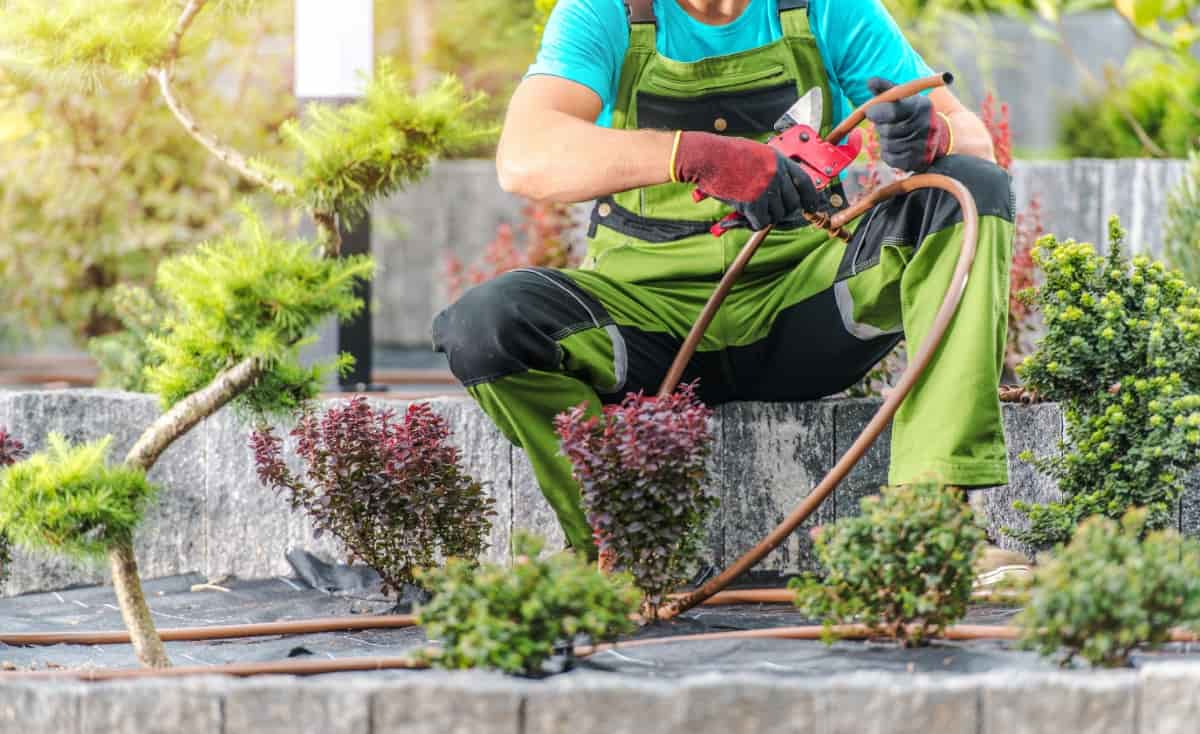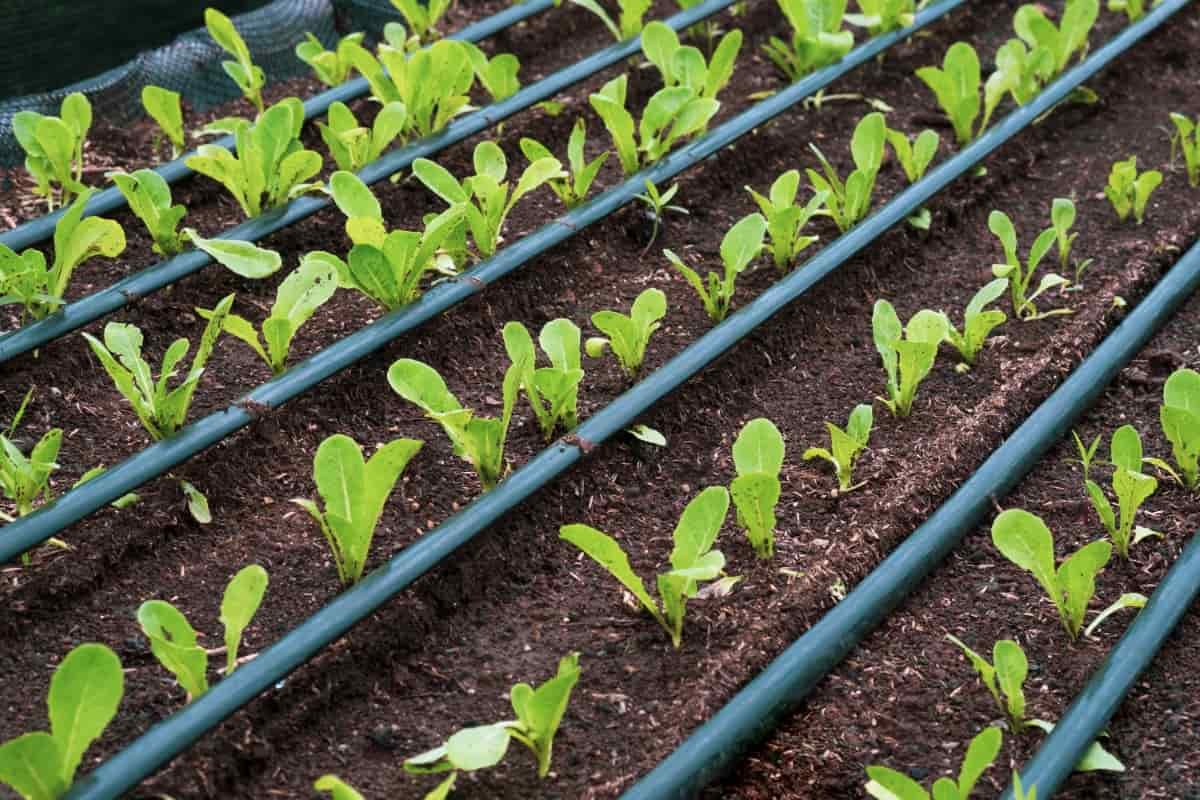Drip irrigation systems are hailed for their water efficiency, providing precise and targeted watering to plants. However, to ensure their optimal functionality, regular maintenance is paramount. Regular upkeep not only extends the system’s lifespan but also safeguards crop health and maximizes water conservation.

In the absence of proper maintenance, drip systems may face issues such as clogging, leaks, and uneven water distribution. Clogged emitters can impede water flow, affecting plant hydration, while leaks can lead to water wastage and potential damage to surrounding soil. Uneven water distribution may compromise crop uniformity, impacting growth and yield.
Timely maintenance also aids in identifying and rectifying problems early on, preventing costly repairs and system failures. Monitoring the system for wear and tear, checking filters, and ensuring uniform pressure are crucial aspects of maintenance that contribute to the sustained efficiency of drip irrigation systems.
Maintenance of Drip Irrigation Systems
Key Components to Inspect and Maintain in Drip Irrigation Systems
- Filters: Regularly inspect and clean filters to prevent clogging, ensuring uninterrupted water flow. Clogged filters can lead to decreased system efficiency and uneven watering.
- Emitters: Check emitters for any blockages or malfunctions. Clean or replace damaged emitters to maintain uniform water distribution across the entire field or garden.
- Tubing and Pipes: Examine tubing and pipes for leaks, cracks, or wear. Replace damaged sections promptly to prevent water wastage and potential damage to the surrounding soil.
- Pressure Regulators: Verify that pressure regulators are functioning correctly. Inconsistent pressure can lead to uneven watering, affecting plant health and crop yield.
- Flush the System: Periodically flush the system to remove debris and sediment, preventing clogs in the tubing and emitters. This ensures a smooth and efficient water flow.
- Control Valves: Test and lubricate control valves to prevent sticking or malfunction. Properly functioning valves are essential for regulating water flow and distribution.
- Monitoring Sensors: If applicable, check and calibrate monitoring sensors to ensure accurate data collection. Proper sensor function enhances the system’s ability to respond to varying environmental conditions.
Seasonal Maintenance Tips for Drip Irrigation Systems
Spring
- Check for winter damage and repair any leaks or cracks in pipes and tubing.
- Clean and inspect filters to remove debris accumulated during the dormant period.
- Verify emitters for proper functioning and replace any damaged units.
- Adjust the system’s schedule to meet the changing water needs of growing plants.
Summer
- Monitor water pressure regularly to maintain uniform irrigation across the field.
- Insulate exposed tubing to prevent overheating and damage from the sun.
- Adjust the system’s timer to accommodate increased water demand during hot weather.
- Mulch around the plant’s base to retain moisture and reduce evaporation.
Fall
- Trim and prune plants to prevent overgrowth that may interfere with the system.
- Inspection and repairs are required for any damage caused by extreme summer conditions.
- Remove and store sensitive components before the first frost to prevent freezing.
Winter
- Winterize the system by draining water from pipes and storing components in a protected area.
- Insulate above-ground components to prevent freezing and damage.
- Periodically check the system for ice buildup and clear any obstructions.
Troubleshoot Common Issues in Drip Irrigation Systems
- Clogging: Identify and clear clogged filters, emitters, or tubing, ensuring unobstructed water flow.
- Leaks: Inspect the entire system for leaks and repair or replace damaged drip sections to prevent water wastage.
- Uneven Watering: Adjust pressure regulators and inspect emitters to ensure uniform water distribution over the entire field.
- Pressure Fluctuations: Check pressure regulators for malfunctions and adjust as needed to maintain consistent water pressure.
- System Blockages: Flush the system regularly to remove debris and sediment that can cause blockages in tubing and emitters.
- Component Wear and Tear: Replace worn-out components such as tubing, pipes, and emitters to maintain system efficiency.
- Timer Malfunctions: Test and recalibrate the system timer to ensure accurate scheduling of irrigation cycles.
In case you missed it: How to Convert Sprinkler to Drip Irrigation: Step-By-Step Guide for Beginners

Implement a Preventative Maintenance Schedule for Drip Irrigation Systems
Monthly
- Inspect Filters: Check and clean filters to prevent clogging, ensuring unimpeded water flow.
- Emitters Examination: Regularly inspect and replace malfunctioning emitters to maintain uniform water distribution.
Quarterly
- Tubing and Pipe Inspection: Examine tubing and pipes for leaks or wear, replacing damaged sections promptly.
- Pressure Regulator Check: Verify pressure regulators for consistent performance and adjust as needed.
Annually
- Complete System Check: Conduct a comprehensive system evaluation, replacing worn-out components and adjusting settings based on seasonal requirements.
- Winterization: Before winter, drain the system, insulate above-ground components, and store sensitive parts in a protected area.
Cleaning and Flushing Procedures for Drip Irrigation Systems
- Filter Cleaning: Remove and clean filters to eliminate debris and sediment hindering water flow.
- Emitter Flushing: Flush emitters to clear any accumulated particles and ensure consistent water distribution.
- System Flush: Conduct a system-wide flush to remove accumulated debris from tubing and pipes.
- Inspect Valves: Check control valves for debris, cleaning or lubricating them as necessary.
- Complete System Flush: Before the growing season, perform a thorough system flush to remove any residual debris and prepare for optimal performance.
Maintain Proper Water Pressure in Drip Irrigation Systems
Maintaining consistent water pressure is critical for the optimal functioning of drip irrigation systems. To ensure this, regularly inspect and adjust pressure regulators. Monthly checks should include verifying the pressure at various points in the system. Adjust the regulators as needed to maintain the recommended pressure levels for efficient water distribution.
In case you missed it: How to Install Drip Irrigation in Coconut Plantation: Layout, Design, and Cost Per Acre

Addressing pressure issues promptly prevents uneven watering, promotes uniform crop growth, and reduces the risk of system malfunctions. Additionally, installing pressure gauges at key points in the system aids in continuous monitoring and quick response to pressure fluctuations.
Monitor and Adjust Emitters and Drippers in Drip Irrigation Systems
Regular monitoring and adjustment of emitters and drippers are fundamental to sustaining the effectiveness of drip irrigation. Monthly inspections should involve verifying each emitter’s output to ensure uniform water distribution. Adjust flow rates or replace malfunctioning emitters promptly. Periodically check for clogs or blockages in emitters, clearing any debris.
Adjusting the spacing and height of emitters based on plant growth is crucial for accommodating changing water needs. Continuous vigilance and adjustment of emitters and drippers contribute to the system’s efficiency, maximizing water use and promoting healthy crop development.
Inspect and Repair Leaks in Drip Irrigation Systems
Leak detection and repair are vital aspects of drip irrigation maintenance. Regularly inspect the entire system for leaks, focusing on tubing, pipes, and connectors. Promptly addressing any leaks is crucial to prevent water wastage and potential damage to system components. Utilize pressure tests and visual inspections to identify leaks accurately.
Replace or repair damaged sections immediately, ensuring the system maintains optimal efficiency. Incorporating leak inspections into routine maintenance safeguards water resources protects the integrity of the irrigation system, and sustains healthy plant growth.
Winterization and Off-Season Maintenance for Drip Irrigation Systems
Preparing drip irrigation systems for winter and performing off-season maintenance is essential to prevent damage and ensure a smooth restart in the growing season. Before winter, drain the system to prevent freezing and potential pipe damage. Insulate exposed components, including tubing and valves, to protect against extreme temperatures.
In case you missed it: A Comparative Cost Analysis of Drip Irrigation Per Acre

Store sensitive parts in a secure location. During the off-season, periodically check stored components for wear and tear. Prioritize thorough system inspections before resuming operation, replacing any damaged parts, and adjusting settings based on seasonal requirements. This proactive approach to winterization and off-season maintenance contributes to the longevity and efficiency of the drip irrigation system.
Conclusion
In conclusion, regular inspections, timely repairs, and adherence to preventative schedules ensure optimal water distribution, crop health, and system longevity. By addressing issues promptly and implementing seasonal maintenance routines, farmers can maximize water conservation, minimize resource wastage, and foster thriving crop yields, ultimately contributing to the success and sustainability of modern agricultural practices.
- Feed Your Flock for Less: Top 10 Tips to Save on Chicken Feed
- Ultimate Guide to Ossabaw Island Hog: Breeding, Raising, Diet, and Care
- Hatching Answers: The Top 10 Reasons Your Chickens Aren’t Laying Eggs
- Eggs and Economics: Breaking Down the Cost of Raising Backyard Chickens
- Defend Your Greens: Proven Methods to Keep Iguanas Out of Your Garden
- Ultimate Guide to Cinnamon Queen Chicken: A Comprehensive Guide for Beginners
- Ultimate Guide to California Tan Chicken: Breeding, Raising, Diet, Egg-Production and Care
- Ultimate Guide to Marsh Daisy Chicken: Breeding, Raising, Diet, and Care
- 10 Types of Chicken Farming Businesses You Can Start for Profits